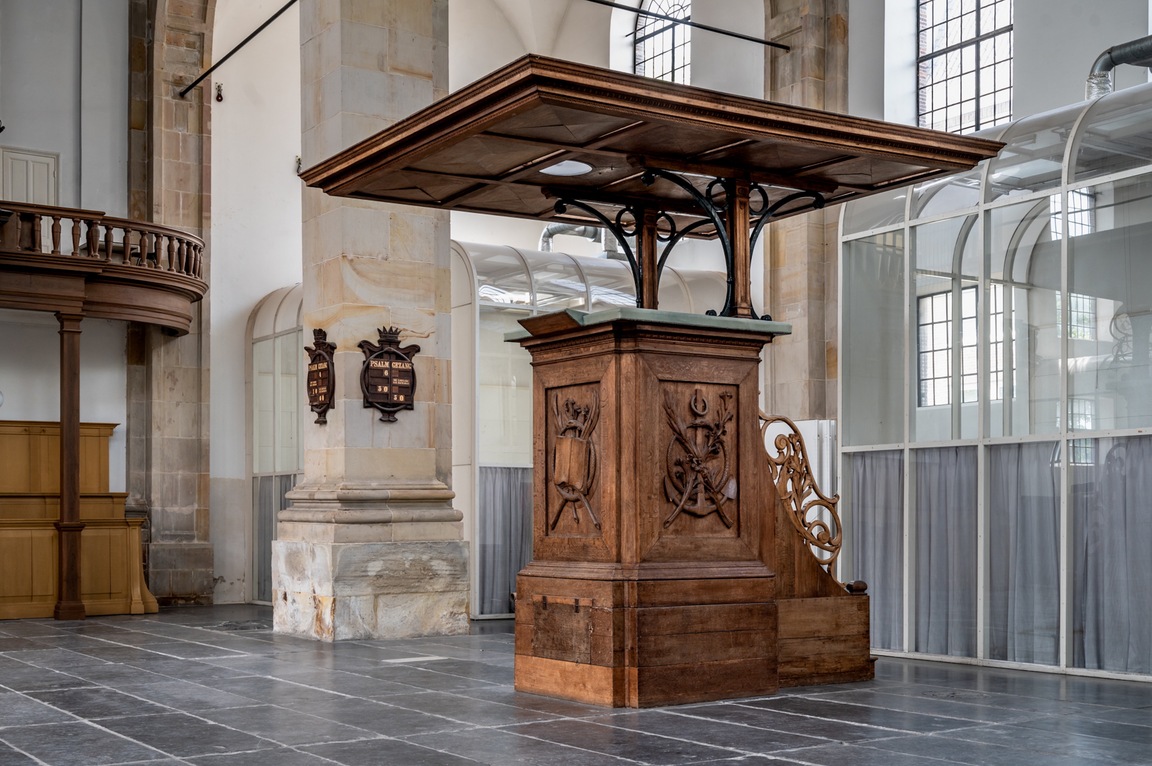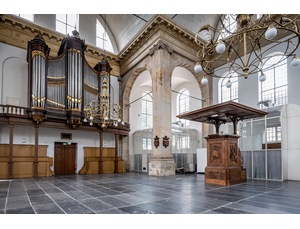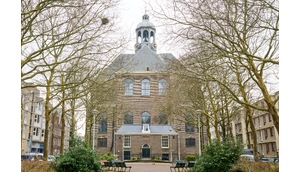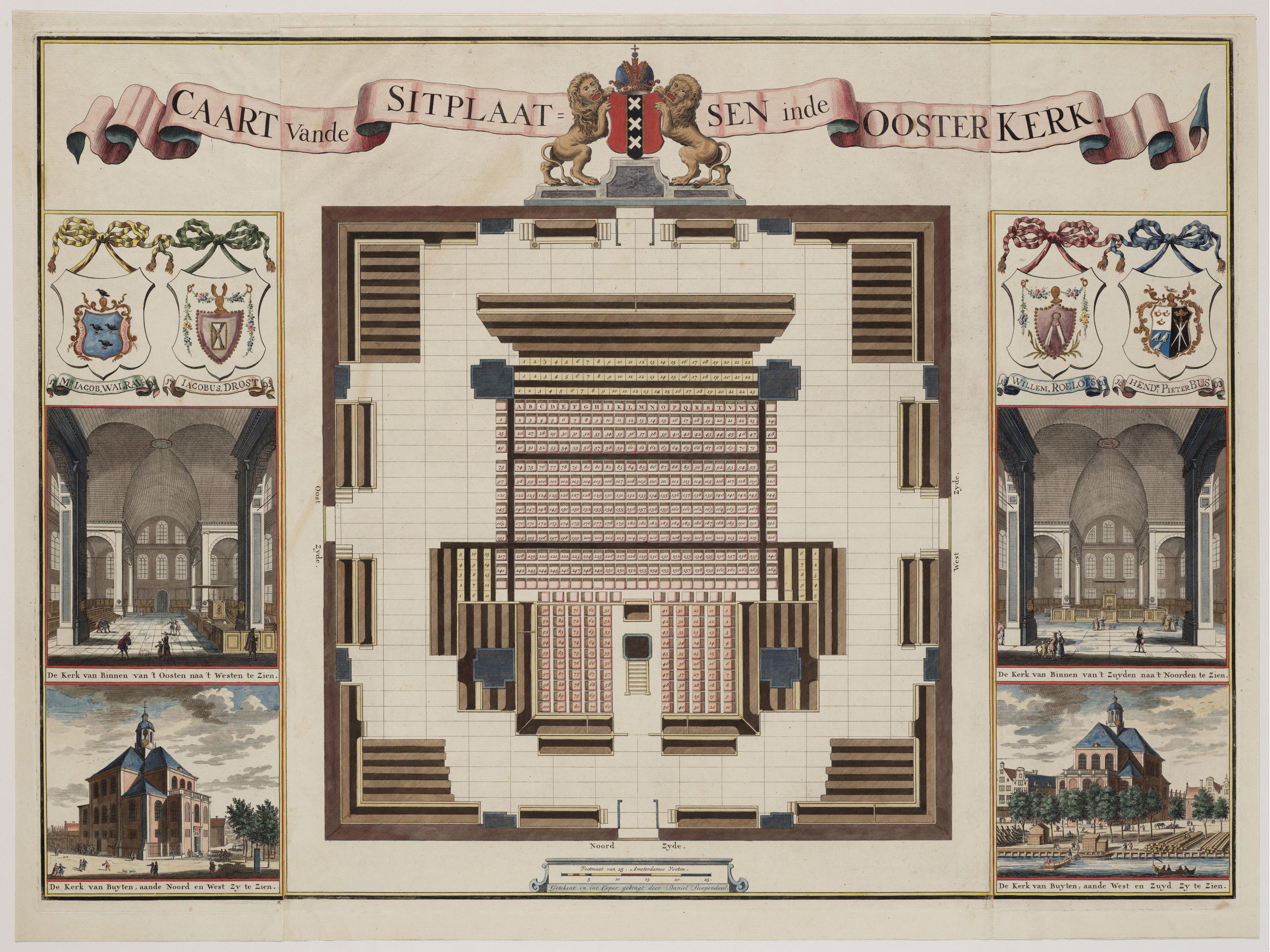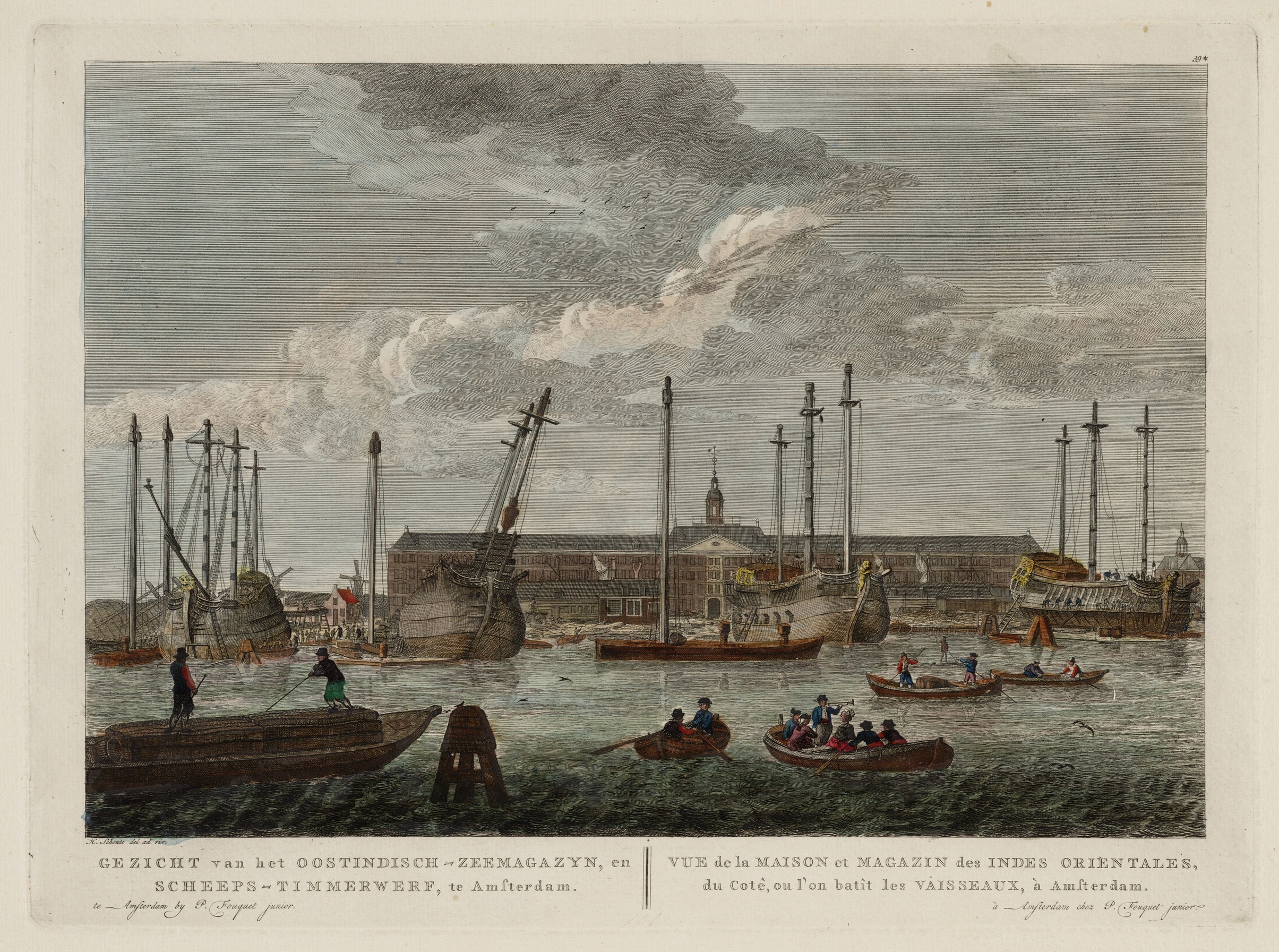A unique pulpit for the inhabitants of the eastern islands.
Location
Oosterkerk
Kleine Wittenburgerstraat 1
Type
Church
Religious community
Former Dutch Reformed Church
Object
Detached pulpit with representations of Faith, Hope and Love
Maker and date
Maker unknown
1671
Visit
At the church during opening hours
It is Sunday morning, October 4th, 1671, when the Amsterdam minister Nicolaus de la Planque leaves home early and makes his way through the shipyards of the eastern islands. He is on his way to the newly built Oosterkerk on the Kleine Wittenburgerstraat to deliver the consecration sermon. De la Planque is 45 years old when, as the church’s first minister, he climbs the steps of the square pulpit. The pulpit on which he stands is unique in Amsterdam: a freestanding square structure with three decorated wooden panels depicting the symbols of faith (a Bible), hope (an anchor), and love (a heart).
Among the island residents who attend the Oosterkerk, there are plenty of woodworkers. They are also known as “bijltjes” (“little axes”), a reference to the main tool of the ship carpenters whose workshops are located around the church and the adjacent Admiralty Warehouse. The ship’s carvers are famous for their skill in making ornate transoms and figureheads. Could it have been one of these “bijltjes” who, in the spring of 1671, temporarily left the shipyard to work on the woodcarving of the Oosterkerk?
In the “accounts of income and expenses,” the churchwardens of the Oosterkerk kept records of everyone who contributed to its construction. On the sixth page, amid the invoices for delivered beer, wood, and copper, we read that three carvers were also paid. All three were woodworkers by trade, but not known for other church interiors—except one: the 27-year-old Barent Rijsenbeeck. In 1681, he would create three pulpit panels for the Reformed Church of Bennebroek with the same iconographic design as the Oosterkerk pulpit. As for the other two carvers, Guilaum Verhoef and Christoffel Spoelder, the church archives tell us little. Were these three men, in fact, ship’s carvers by profession? In any case, through their woodcarving in 1671, they succeeded in uniquely incorporating the identity of the islanders and their shipyards into the interior of the Oosterkerk.
Celine Oldenhage
Archivist Waalse Gemeente Amsterdam / Member of teh Art Committee of the Protestant Church of Amsterdam
Last edited
August 15, 2025
Pulpit with panels, Barent Rijsenbeeck, Guilaum Verhoef, Christoffel Spoelder, 1671, oak. Collection Stadsherstel Amsterdam. Photo Robert Westera.
Interior: photography Reinier van der Vliet, Stadsherstel Amsterdam.
Exterior: photography Robert Westera.
Caart vanande Sitplaatsen vanande Oosterkerk, Jan Goeree and Daniël Stopendaal, c. 1700, coloured engraving. Collection Stadsarchief Amsterdam, Atlas Dreesman.
View of the oostindisch-zeemagazyn, and shipyard, at Amsterdam, H.P Schouten and P. Fouquet, 1760-1780, coloured engraving. Collection Stadsarchief Amsterdam, Atlas Dreesman.
'Faith', centre panel of the pulpit, Barent Rijsenbeeck, Guilaum Verhoef, Christoffel Spoelder, 1671, oak. Collection Stadsherstel Amsterdam. Photo Robert Westera.
Bom, G.D., De Oosterkerk te Amsterdam (Amsterdam 1922).
Hamming, B., De Oosterkerk. 340 jaar middelpunt van de Oostelijke Eilanden (Amsterdam 2011).
Wagenaar, J., Amsterdam in zijne opkomst, aanwas. Geschiedenissen […] (Amsterdam 1765).


